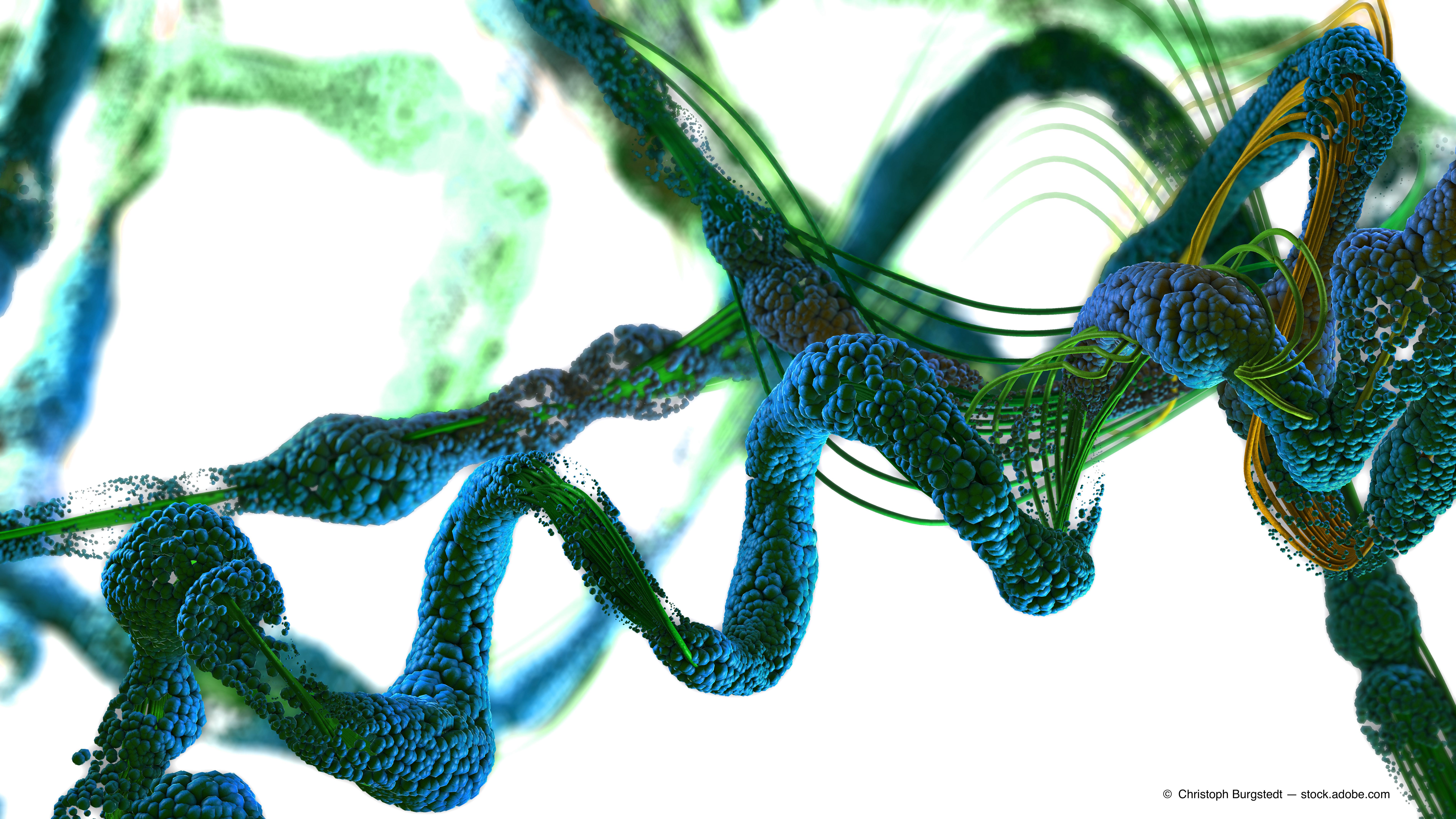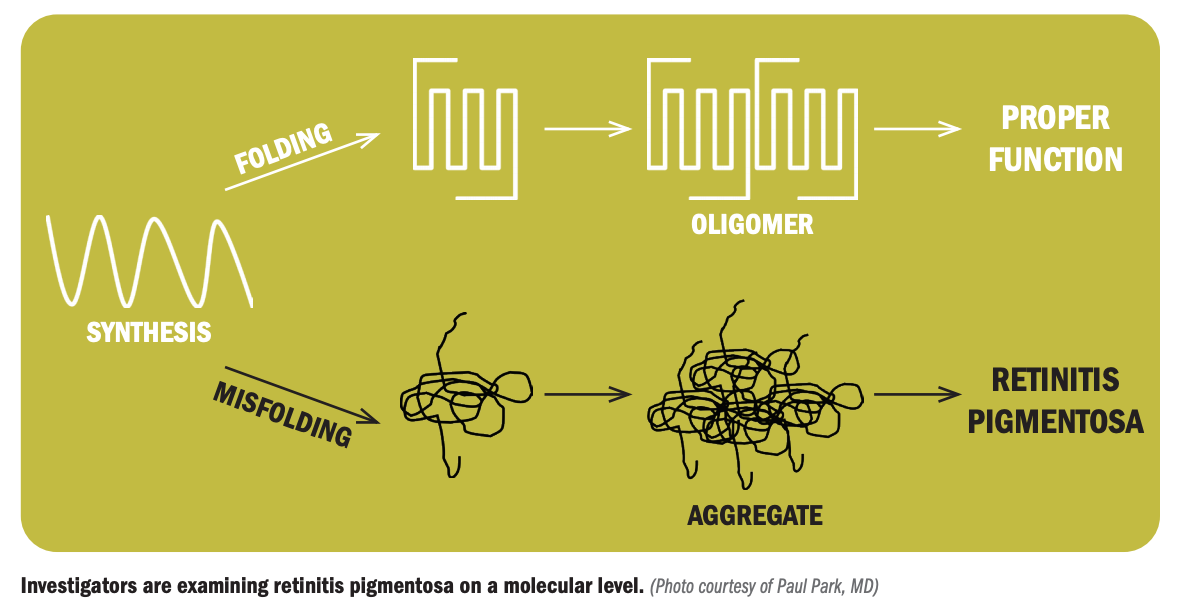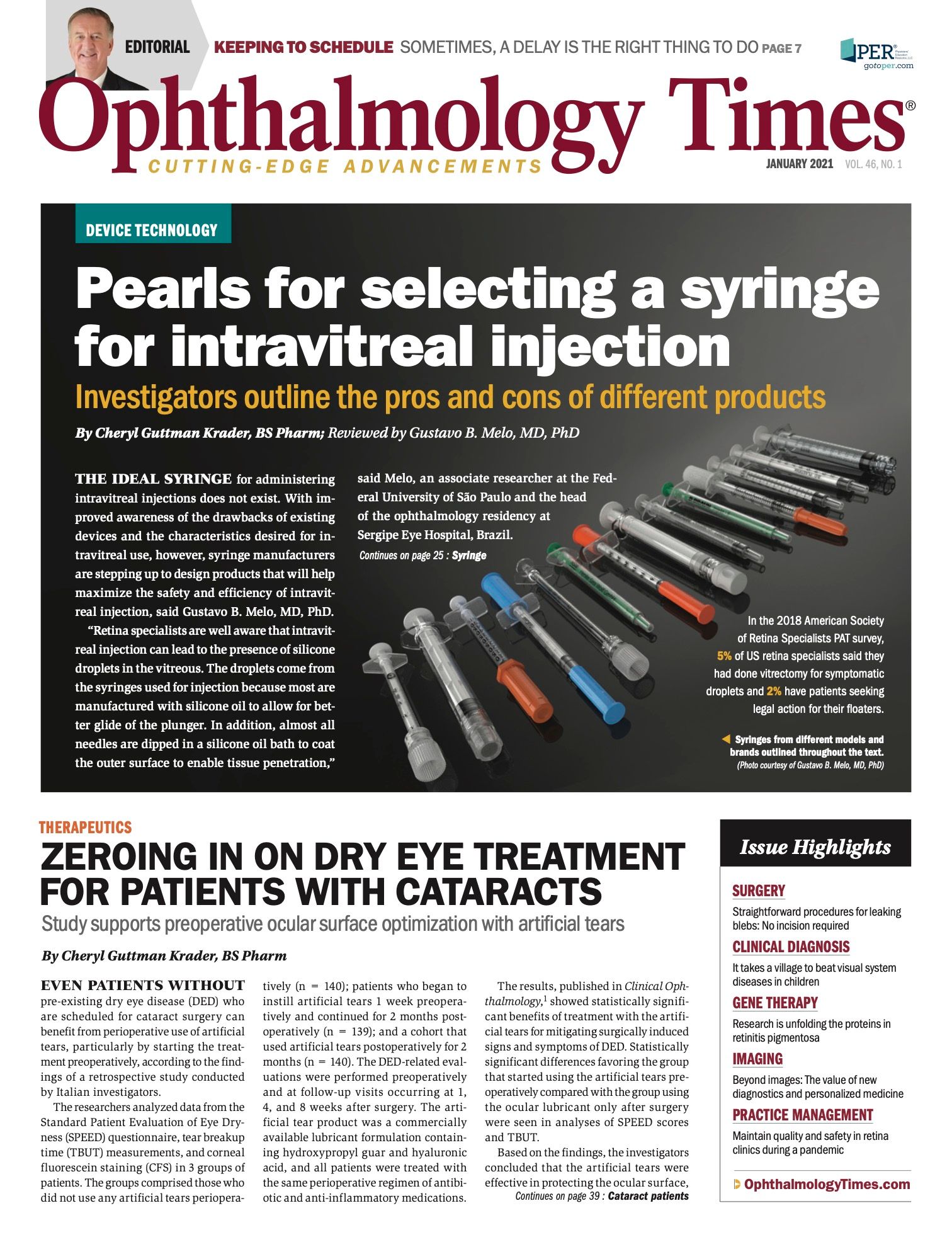Publication
Article
Digital Edition
Research is unfolding the proteins in retinitis pigmentosa
Author(s):
Investigators focus on biophysical method to study protein-protein interactions .

This article was reviewed by Paul Park, PhD
Investigations into how retinitis pigmentosa (RP) occurs are being conducted at the molecular level in the laboratory of Paul Park, PhD, where researchers study the processes occurring in the photoreceptor cells in the retina.
A promising technology used in this research is Förster resonance energy transfer (FRET), a biophysical method to study protein-protein interactions.
“The disruptions of these cells cause various dysfunctions ranging from mild problems with night blindness to severe ones that result in retinal degenerations and complete blindness,” said Park, associate professor at Case Western Reserve University’s Department of Ophthalmology and Visual Sciences in Cleveland, Ohio.
Related: Study: Some RP abnormalities are linked with lower visual acuity
Rhodopsin, a protein that detects photons of light that start biochemical reactions, is involved in the initial events of vision and the focus of their work, specifically in relation to factors that maintain the health of the photoreceptor cells.
Rhodopsin’s light-sensing activity is mediated by a vitamin A derivative conjugated to the protein.
Dysfunctions in rhodopsin cause RP, congenital night blindness, and Leber’s congenital amaurosis, and rhodopsin activity can have secondary effects in the pathogenesis of diabetic retinopathy and age-related macular degeneration.
Proper production of rhodopsin with proper 3-dimensional conformation to form higher order structures is paramount for functioning in the eye; protein misfolding results in RP.
Using atomic force microscopy, Park and colleagues can visualize the clusters of rhodopsin in the disc membranes in the photoreceptor cells.
When the proper structure of rhodopsin cannot be attained, the consequent misfolding results in toxic complexes (aggregates), with RP as the product.
Related: Gene panel offers expanded diagnostic capability of inherited retinal diseases

RP and FRET
RP is a group of diseases that begin with rod photoreceptor degeneration, leading to eventual cone photoreceptor degeneration and blindness.
Mutations in more than 40 genes can cause this process. Among them are mutations in rhodopsin.
“Mutations in the rhodopsin gene are among the leading cause of autosomal-dominant RP, and more than 100 mutations have been identified, a majority [of] which cause protein misfolding and aggregation,” Park said.
The mechanism by which the misfolding and aggregation occur and lead to deterioration of the healthy retina is unclear. The misfolding and aggregation of different proteins also are common to Alzheimer disease, Parkinson disease, and prions disease.
The goal now is to gain an understanding of the malignant processes in the eye and to devise strategies to disrupt the aggregation, Park said.
“The challenge that we have is how to study the aggregates of rhodopsin,” he said.
Related:Harnessing regeneration of retinal tissues: An option almost within reach
His laboratory is using FRET to detect protein-protein interactions. He said this is an artificial system devised in his laboratory that facilitates manipulation of rhodopsin DNA to genetically engineer a fluorescent protein that can be fused to the receptor. This can then be expressed in cultured cells for study using FRET.
“FRET allows us to determine if 2 protein molecules are far apart from each other or forming complexes,” he said. The investigators look at aggregates by treating the cells with detergents that can disrupt complexes formed by normal rhodopsin but cannot disrupt aggregated rhodopsin.
Park said FRET is being used on a range of different rhodopsin mutations that cause RP, including the P23H mutation, and characterizing the aggregation properties. The investigators also are testing various pharmacologic agents.
Investigators have learned that there is variability in the severity of misfolding and aggregation depending on specific mutations. The autosomal-dominant phenotype does not result from physical interactions between mutations and wild-type receptors, useful information to aid in development of medications.
Related: Intravitreally injected hRPCs improve vision in retinitis pigmentosa cases
Proposed pharmacologic therapies are predicted to be ineffective for some mutations and detrimental for others.
Finally, the species background of rhodopsin mutations can affect aggregation properties and the effects of pharmacologic therapies.
The plan is for investigators to correlate the biophysical studies with those in animal models and to formulate strategies to disrupt the mutant aggregates that can then be tested by biophysics and in animal models, Park said.
Read more by Lynda Charters
--
Paul Park, PhD
e: paul.park@case.edu
Park has no financial interest in this subject matter.

Newsletter
Don’t miss out—get Ophthalmology Times updates on the latest clinical advancements and expert interviews, straight to your inbox.





